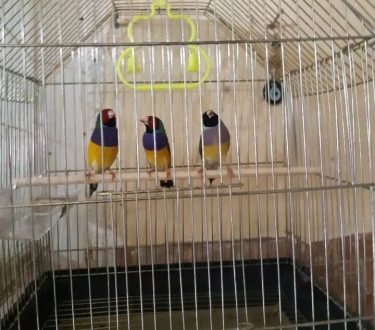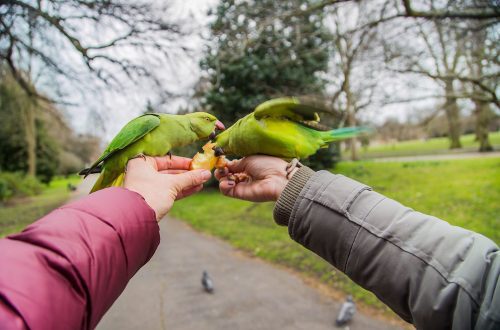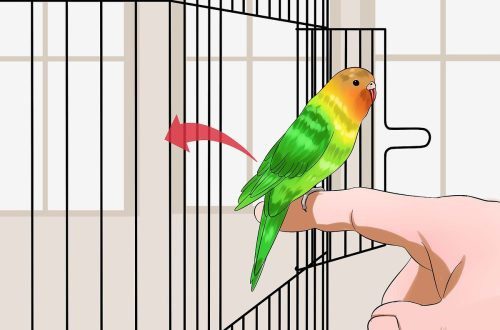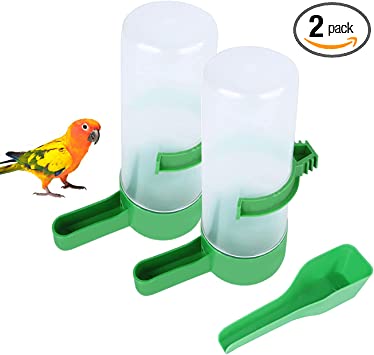
Feeders and drinkers for parrots
Feeders and drinkers for parrots are obligatory and necessary elements in a bird’s cage. To determine which of the attributes will be relevant and most convenient for your parrot, you need to know the tendency of your bird species to turn over, chew, soak food and other possible pranks.
Of course, the picture will become clear to you only after the operation of certain equipment by a feathered friend.
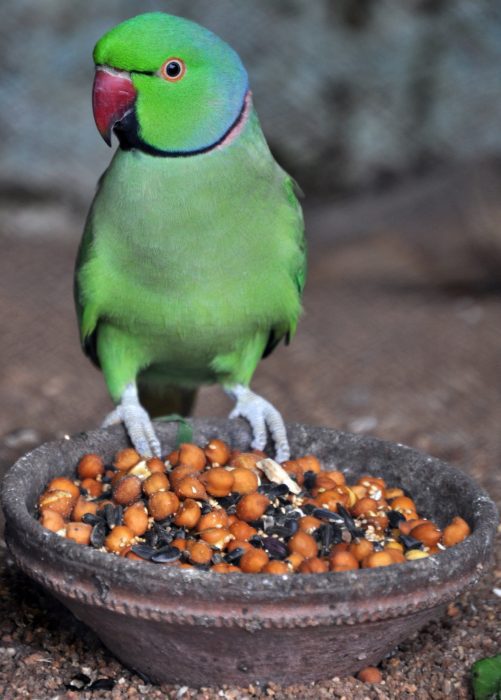
But, if your bird has a strong and strong beak, then it is clear that a plastic feeder will not suit her. Similarly, the decision of what size to buy a feeder will be made based on the type of parrot – it makes no sense for large parrots to buy small dishes, as well as for small ones a large bowl that occupies a third of the cage and is perceived by the bird as a nest.
But there is an iron rule that is the same for all bird owners: there should be two permanent feeders in the cage (for grain feed and mineral mixture) and one more for wet food, which is temporary, since such a perishable type of food cannot be left for a long time.
The choice of feeders is varied, and we will acquaint you with all the positive and negative sides of these food accessories.
Contents
Types of feeders for parrots
There are internal and external feeders. The inner ones are attached inside the cage, the outer ones are outside.
Internal, in turn, are divided into:
1. Mounted. This type of feeder is best mounted in line with the lowest perch or just below it (in no case under it) – thanks to this placement, the husk from the grains is not scattered outside the cage. If the dishes are hung next to the door, you will disturb the bird less when changing food daily.
Mounted feeders are divided into plastic, iron and decorative.
- plastic ones are the most popular feeders among budgerigar breeders. In addition to being perfectly washable, they are made of non-toxic plastic.
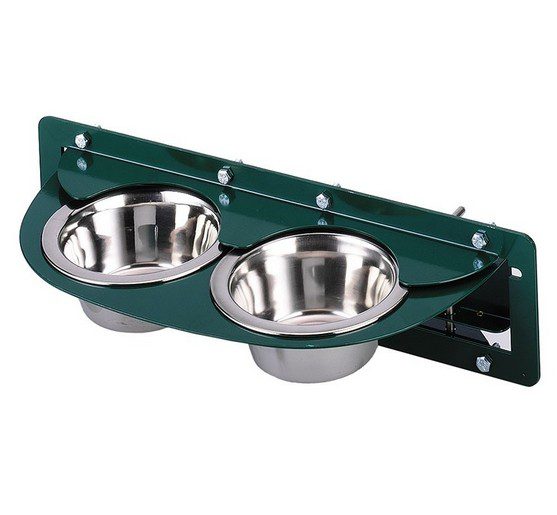
The only drawback may be the threshold, which is not very convenient for the parrot, but the owners of small species of birds have found a way out: they fasten small bars of branches with ties to the ledge or in another convenient way, which provides the bird with a more stable and comfortable position during feeding .
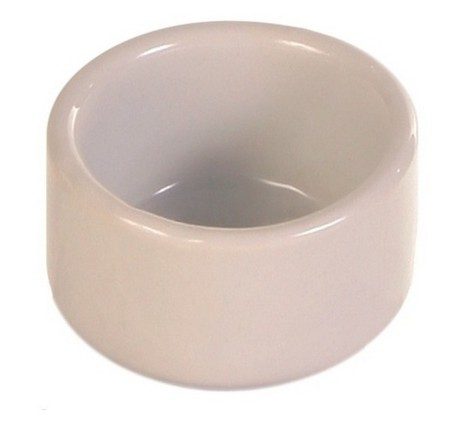
Such feeders are attached to the horizontal bars of the cage using plastic hooks or metal wires. Plastic ones need to be tried on in advance for your type of cage, as they do not fit everyone. Metal ones are more convenient and reliable.
More active and cocky parrots can get used to dropping this type of dish and scattering grain. Thanks to the wire hooks, you can fix the feeder in one position. But do not overdo it: by narrowing the distance between the hook and the rods, you not only prevent the bird from tipping over the feeder, but also make it more difficult to eat it to replace food;
- iron feeders are suitable for all kinds of parrots, they are practical, durable and convenient to use. If necessary, they can be boiled, especially during the period of treatment or quarantine of the bird.
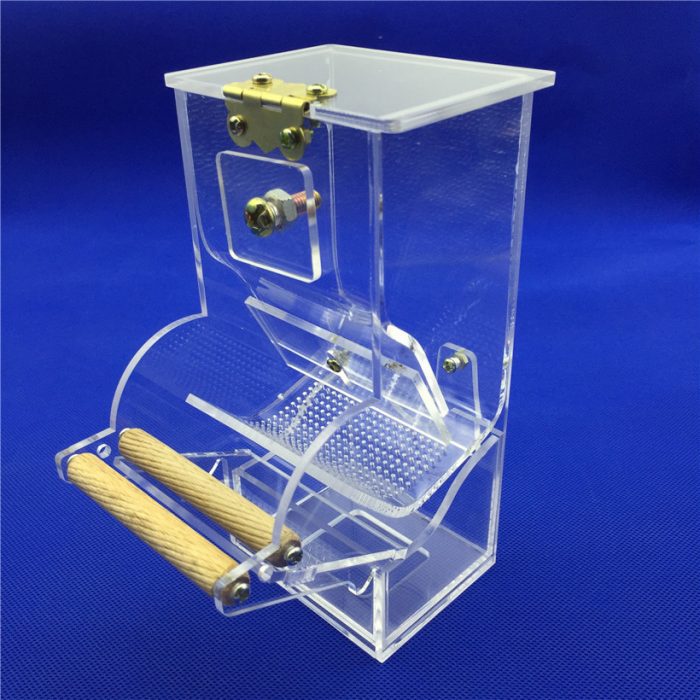
Such containers should be made of stainless steel, in no case do not buy brass, copper, zinc. These species oxidize quickly, especially when exposed to water or wet food, which can lead to poisoning of the parrot.
Metal feeders are fastened with a loop (ring) with hooks or special clips. Such dishes are most often round in shape and, if you decide to use it for budgerigars, fasten a flexible willow branch around the edge of the feeder to make it more comfortable for the bird to sit on the side;
- in stores you can buy decorative porcelain or plastic feeders in bizarre shapes. While they are fairly easy to use, the parrot cage needs to be a decent size as this type of dish takes up a lot of space and can feel bulky in a small birdhouse.
The paint on such dishes is short-lived, after a while it peels off and there are no guarantees that the quality of the paint itself is safe for birds.
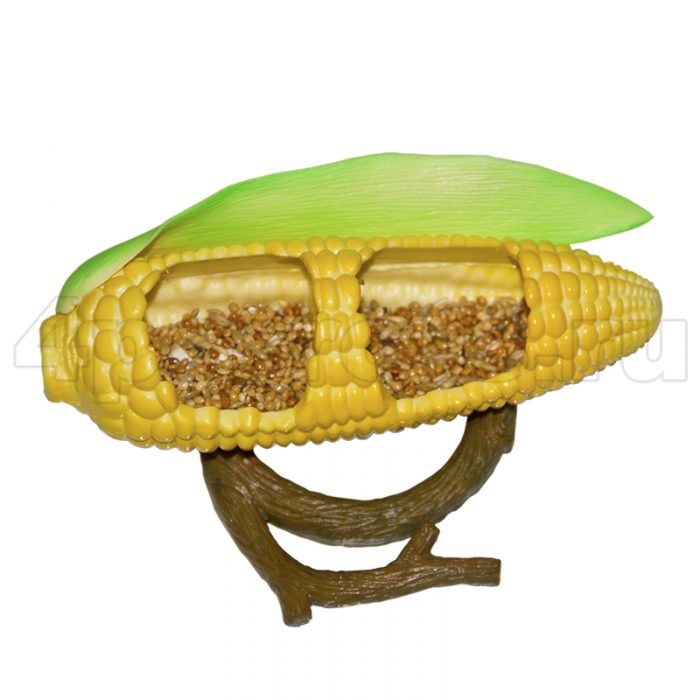
2. Outdoor internal feeders. These are various bowls made of plastic and ceramics, not the most popular type of dishes for birds, so you won’t find them on sale specifically for parrots, but you can quite successfully use feeders for rodents and other animals.
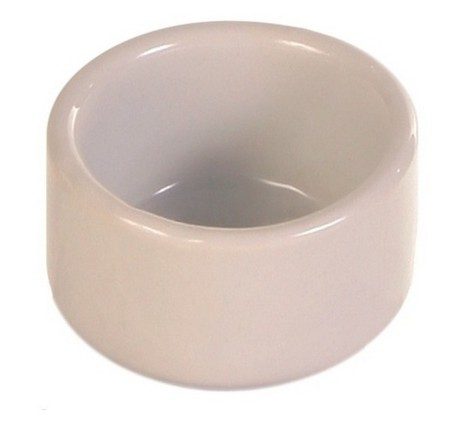
The main thing is that they are made of safe material, stable (birds easily turn over everything that is at the bottom of the cage), a little heavy and with straight, low sides. They can be used for porridge mixes, fruits and vegetables.
They are especially popular with breeders who keep birds in aviaries. In such cases, floor feeders are also used for grain mixtures.
They are also convenient when you need to water and feed a sick bird that is not able to sit on the perches and is constantly at the bottom of the cage.
External hanging feeders.
These are plastic feeders that are attached to the outside of the cage. There are external feeders with a rotary mechanism. This type of bird dishes has a number of advantages: the owner does not need to put his hands inside the cage to change the feed, so the bird feels calm, in addition, the feeder does not “steal” the place in the cage at all as it is outside.
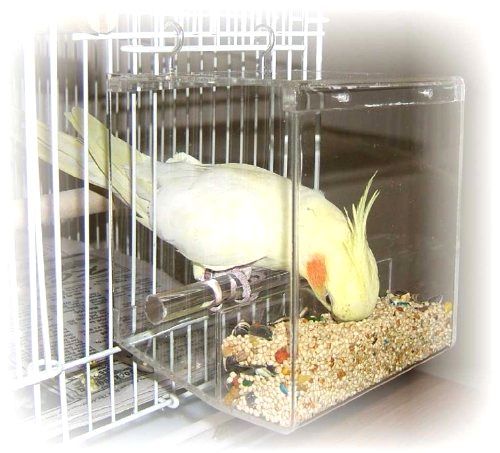
Disadvantages of external feeders:
- each mounted feeder is suitable only for a certain type of cage (each company produces such dishes for its own cage), so all containers have different sizes and characteristics;
- locks in these feeders are within the power of curious parrots, the percentage of escapes made by birds due to such structures is quite high;
- you should always close the window that appears after removing dishes for hygiene procedures;
- The biggest disadvantage of external hanging feeders is that the parrot, climbing entirely into such a container, gets stuck and suffocates if the bird is not rescued in time.
External hanging feeders are most dangerous for budgerigars, young inexperienced birds or parrots that are under stress (adaptation) are also susceptible to it.
Small, narrow and small-entrance feeders are the most dangerous, other outside feeders are quite safe as the bird can turn around in them and exit.
Bunker feeder (auto feeder) in some cases becomes an indispensable thing for bird lovers. It is a bunker (capacity) and the feeder itself. Works under the influence of gravity – through a small hole, the grain mixture gradually moves into the feeder as the grain is eaten.
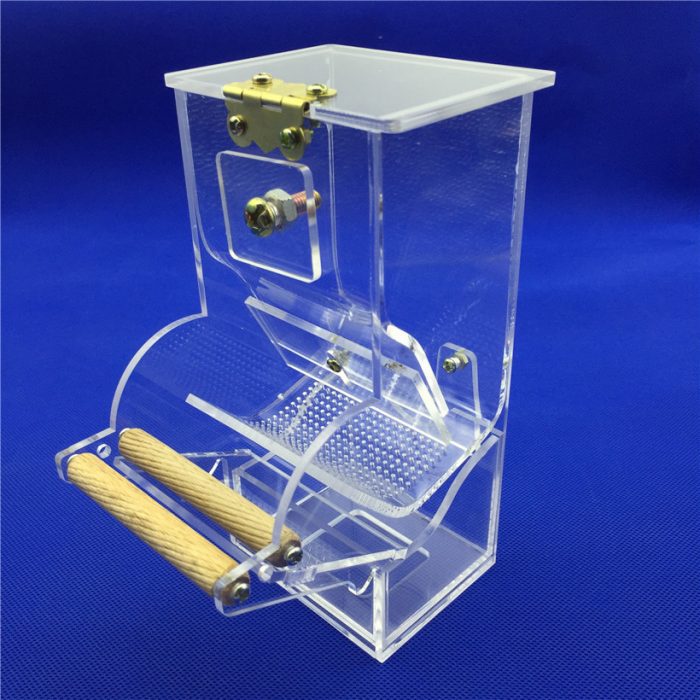
In the automatic feeder, the feed always remains clean and fresh, all the husks fall on the pallet or in a special compartment, but if it is filled, you will not be able to control the daily rate of the grain mixture. Very practical if you need to leave for a few days.
Drinkers for parrots
Drinking bowls are open, closed and automatic.
Open drinkers the simplest and most inexpensive, their significant drawback is that the water needs to be changed several times a day, as it gets dirty very quickly with feathers, husks and pieces of fruit and herbs, especially if the parrot has a habit of throwing food into the water.
Closed drinkers for parrots are more hygienic and convenient, these are either glass or plastic devices.
Automatic drinkers the most reliable in terms of hygiene and maintaining the purity and freshness of water.
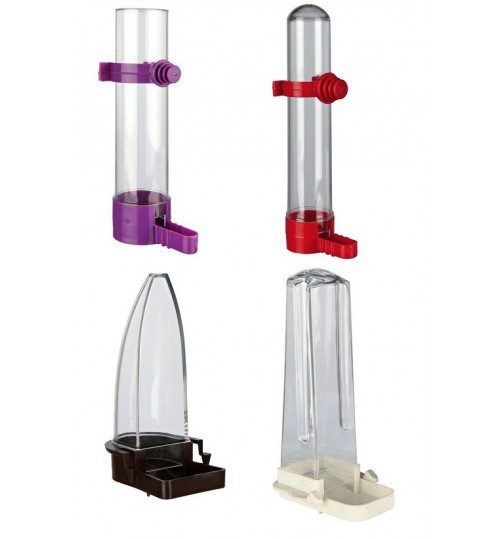
Some owners install automatic caged rodent drinkers for those parrots that soak everything that gets in their beak with a special passion. In this case, such an auto-drinking bowl is a salvation from the rapidly spoiling bird soup, which is created by birds.
In the process of accustoming to this type of drinker, the main drinker should not be taken away until you are sure that the bird has understood the principle of the automatic drinker with a ball.
Regardless of the type of drinker, water should be used purified and changed at least once a day (as it gets dirty or if vitamin preparations are added, every three hours).
You can buy a drinking bowl for parrots by clicking on these links under the photo:
DIY feeders and drinkers
You can make a hanging feeder or drinker with your own hands. A glass jar of pasta, mustard or caviar is used as a container. Its fastening principle is similar to the fastening of metal feeders (the wire is wrapped around the neck of the jar and fastened with homemade hooks, the curved threshold from the bottom prevents the bird from dropping it to the floor).
Photo of a homemade glass feeder:
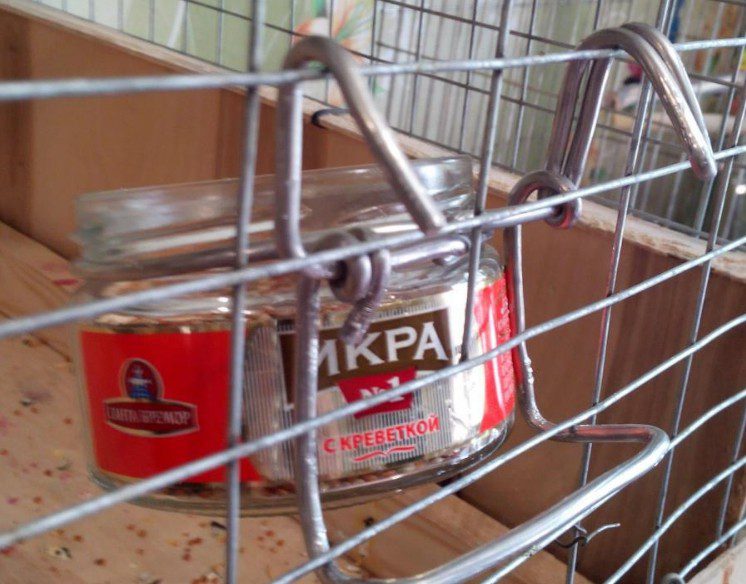
If you suddenly have a parrot and don’t have the necessary accessories for the bird yet, then you can even make a temporary drinker for the bird using a ceramic coffee cup, fixing its ear between the vertical bars of the cage.
Some craftsmen use wooden spoons (from plum, linden and other acceptable tree species) as feeders, they are relevant only for budgerigars, as they are not durable, but quite interesting in interior terms and tasty for parrots.
Homemade parrot feeder with a visor:
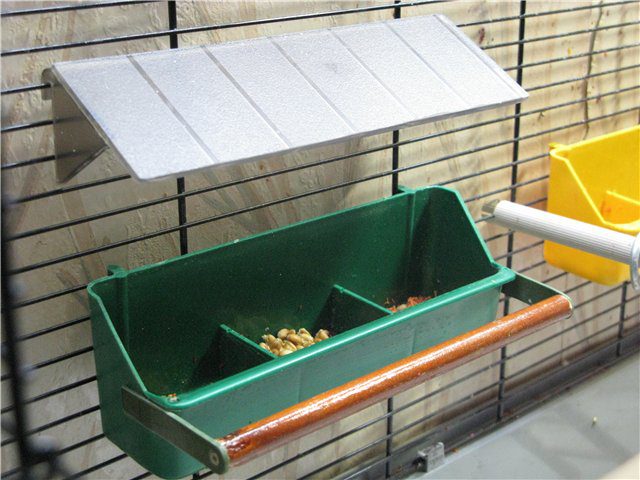
Disinfect feeders under running water, pouring boiling water over them, you can also rinse them in a weak solution of chamomile and dry them.
Since plastic feeders are not resistant to high temperatures, it is necessary to carry out hygiene procedures with them very carefully and quickly.
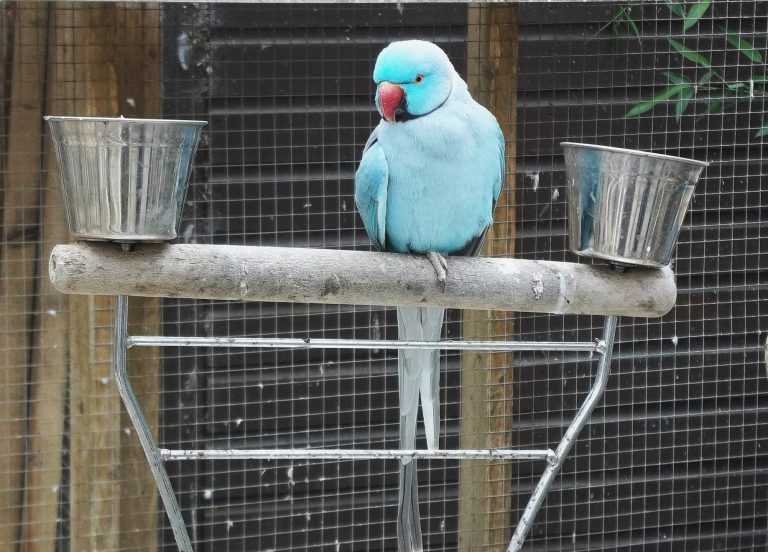
Not always the feeders or drinkers that come with the cage are convenient and practical, do not forget that not all feeders can fit the cage you have chosen. Study in advance the options for cages, feeders and drinkers presented in the markets and online stores.



